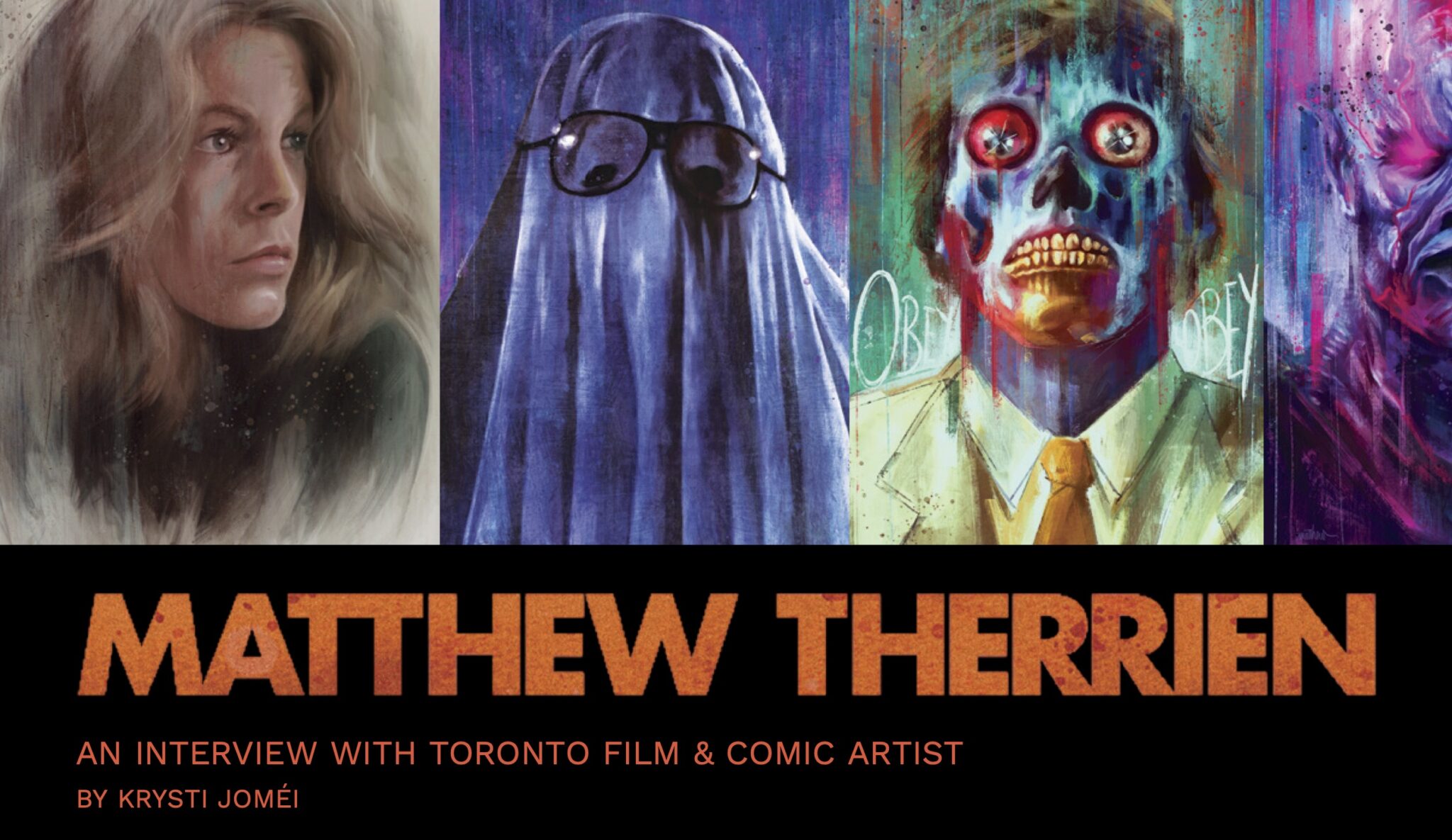
Toronto-based illustrator, writer, musician, dream warrior Matthew Therrien is a bonafide autodidact. With art coursing through his veins, there’s nothing that can stop his creative flow and tackling whatever project or medium that comes his way. No matter the guidelines or clientele — Marvel/Upper Deck, Lionsgate, Vestron Video, SYFY, HorrorHound, Cauldron Films, to name a very few — his portraits, posters, storyboards and comics are undeniably recognizable, bearing a stamp of clandestine beauty, and entrancing the viewer to long for more.
We had the chance to catch up with Matthew after September’s Colorado Festival of Horror to dive deeper into his terrifyingly talented world.
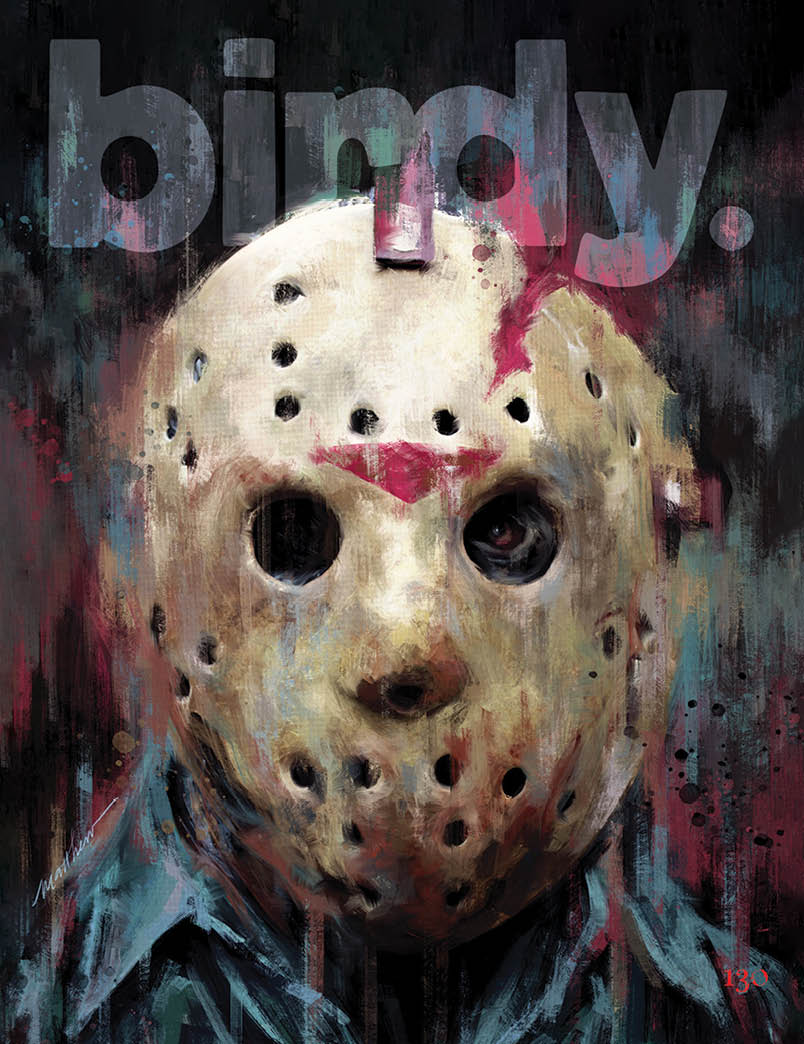
Before becoming a full-time illustrator and creative director, you were a professional pianist. Tell us more about that career and how it led to your current one.
To be honest, my dream has always been to be a filmmaker. Well, to be really honest my dream was to be John Carpenter. However, I grew up in a fairly small Canadian town where movie-making just wasn’t a career path that was accessible, so instead I wound up pursuing music from the time I was about six years old. I graduated university with a degree in classical piano performance, and like you said, music was my entire life. I taught at three different schools, was a music director, choir accompanist and even played in a couple rock bands. Things changed when I was in my mid-20s; I had the opportunity to move to Toronto and started to become friends with a whole bunch of talented people in the film community. It was at that point that I realized I wanted to put music on the back burner and start to actively pursue a role in film. For whatever reason I had the idea that, since I had no film portfolio, I could try and work as a film artist and gradually make connections that way with directors, producers, distributors, studios, etc.
It’s still very much my goal to be actively working in film as either a writer or director (and it’s something that’s getting a bit closer each day!), but I absolutely have art to thank for where I am today. It’s given me a wonderful chance to meet and work with so many incredible people in the industry.
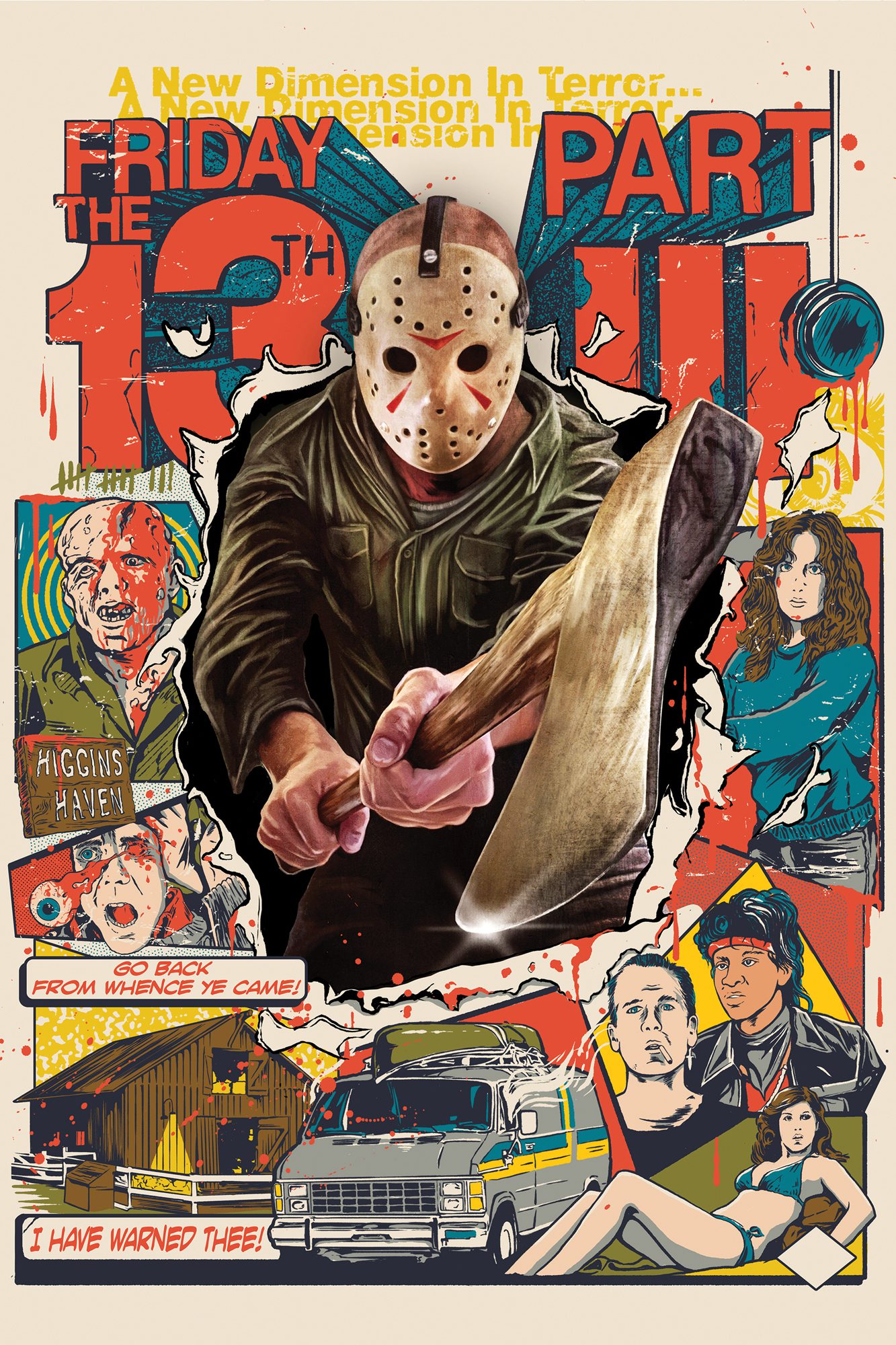
You dove into your art career headfirst with no portfolio as well, spearheading your journey by creating art for the cult film based comic, Manborg: The Official Comic Book Sequel (2013). How did you go about teaching yourself techniques, different forms, everything that you’re so experienced with now?
I have a lot of fond memories of working on the Manborg comic. It happened at a time when I had no followers on social media, and because I didn’t have the pressure of anyone watching my work I was totally free to just experiment with the art. It was really a whole process of trial and error — it was before I was working digitally, so each page was penciled and inked by hand.
After the comic was done I invested in a Wacom tablet and began to teach myself how to paint with Photoshop (which really took about three years before I had any kind of confidence with it). The internet is invaluable though. Artists like Dave Rapoza make so much of their process and technique available online for younger illustrators to learn from. It was really just through a period of drawing a lot, and also going through the wealth of tutorials on the internet, that I was able to finally hone in on a technique that I’ve used pretty much consistently to this day.
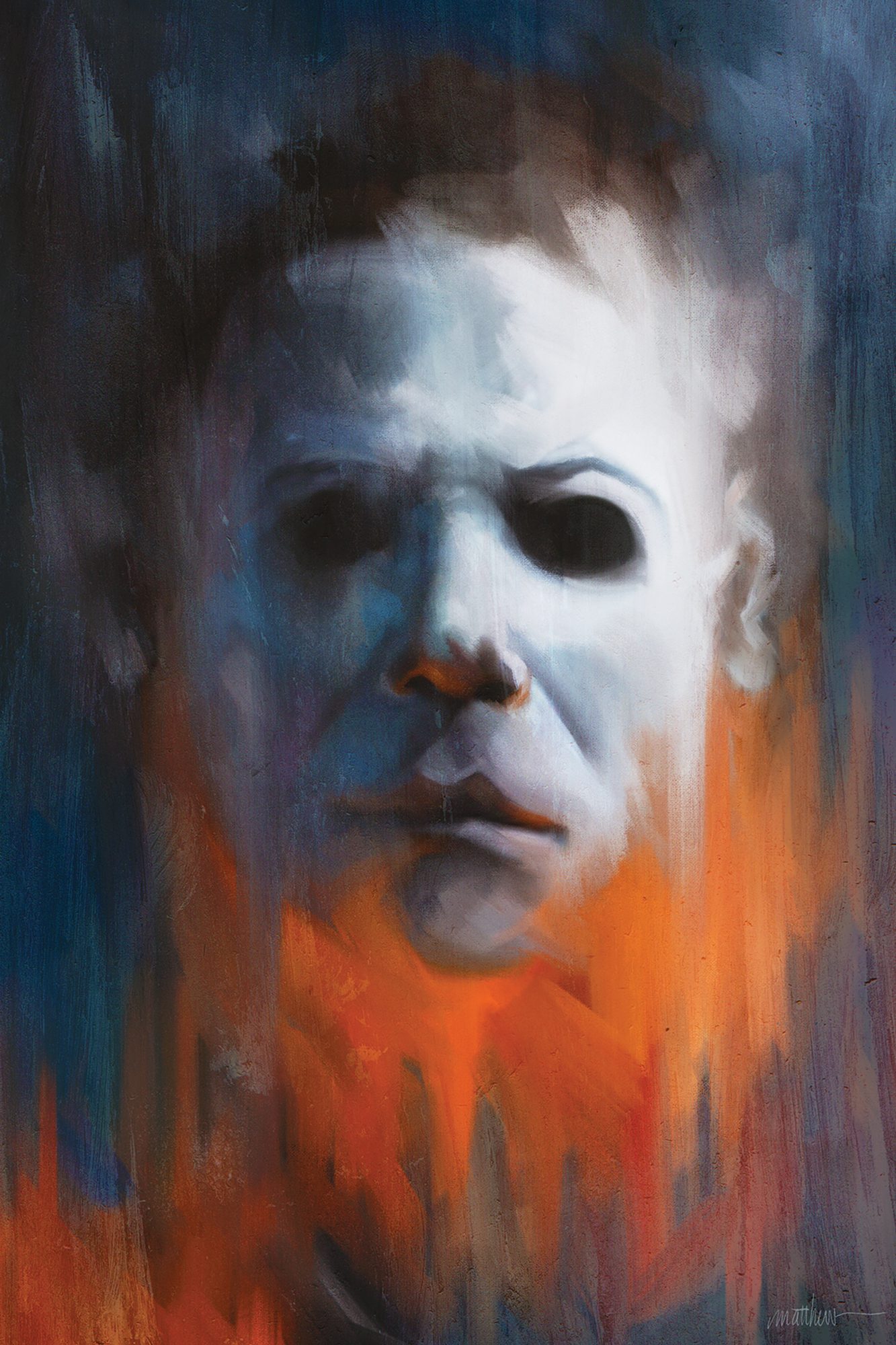
Growing up in the 80s and 90s, you were deeply inspired by film — from their artful VHS covers to the in-person moviegoing experience. What film(s) sparked your passion and how did it shape your artistic path?
The original Halloween (1978) was the film that made me a horror fan. But it was the breathtaking poster art from Bob Peak, Enzo Sciotti, Matthew Peak, Drew Struzan, Richard Amsel, John Alvin and Robert McGinnis (to name just a few) that made me want to be a poster artist. To this day I still reference all of them, and try to incorporate little homages to their artwork whenever possible.
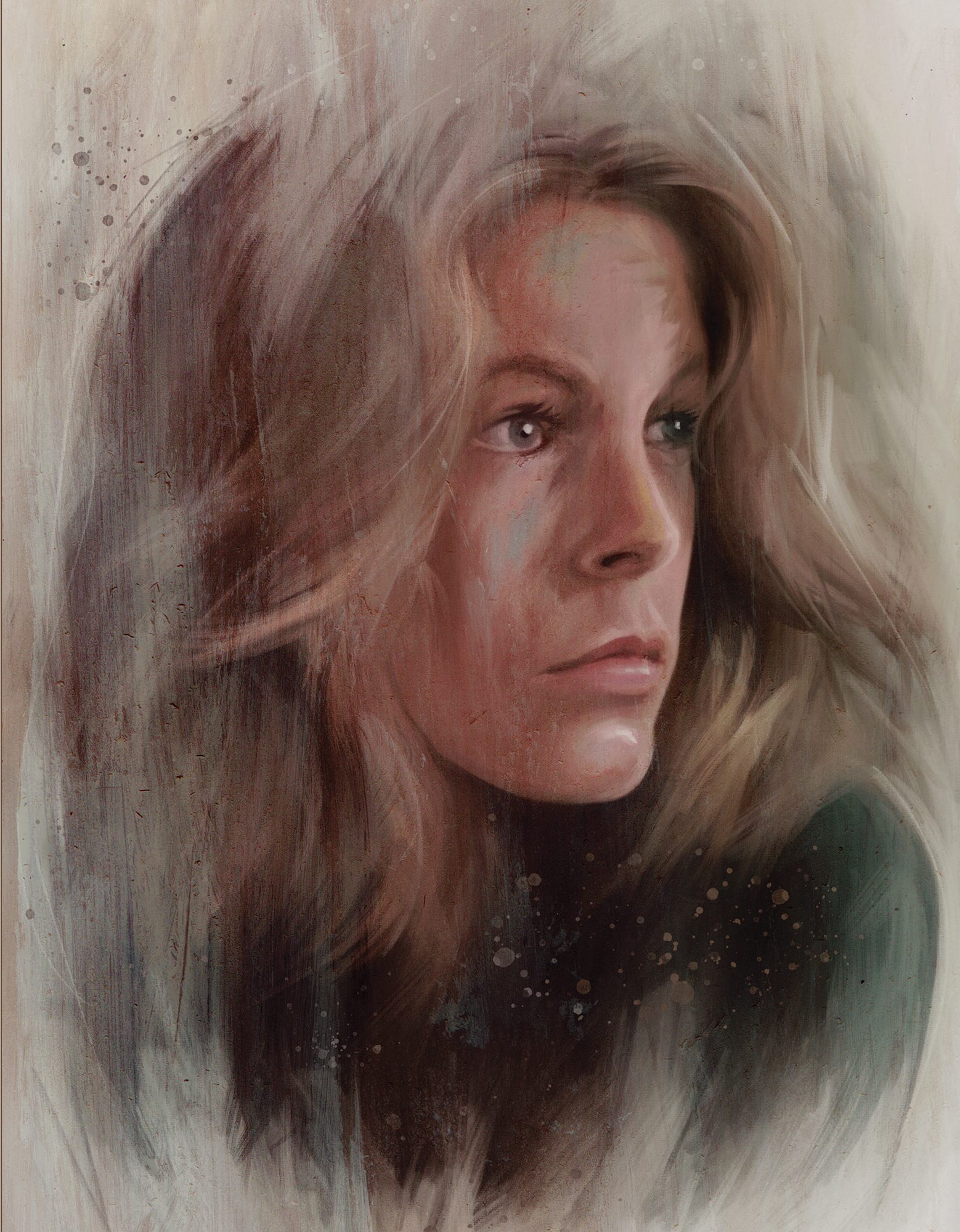
When did you realize you were an artist?
That’s a tough question, because I’m not even sure I feel like an artist now! I knew I was a working artist the first time I was paid for an illustration. And I remember feeling incredibly grateful the first year I supported myself — and my family — purely with art projects.
But I really struggle with the “artist” label. I work as a commercial illustrator, so ultimately what I’m creating is artwork to sell a product. I try to infuse each piece with my own aesthetic, but at the end of the day, I’m serving a client. Which means often there are very specific requirements, or lengthy revisions that need to be accommodated.
I think we’re all artists, regardless of experience or skill, whenever we find ourselves creating something purely for the sake of the joy that comes from creating. It’s in those moments, when I’m not working for a client but only for myself … those are the moments when I feel the most connected to that artist label.
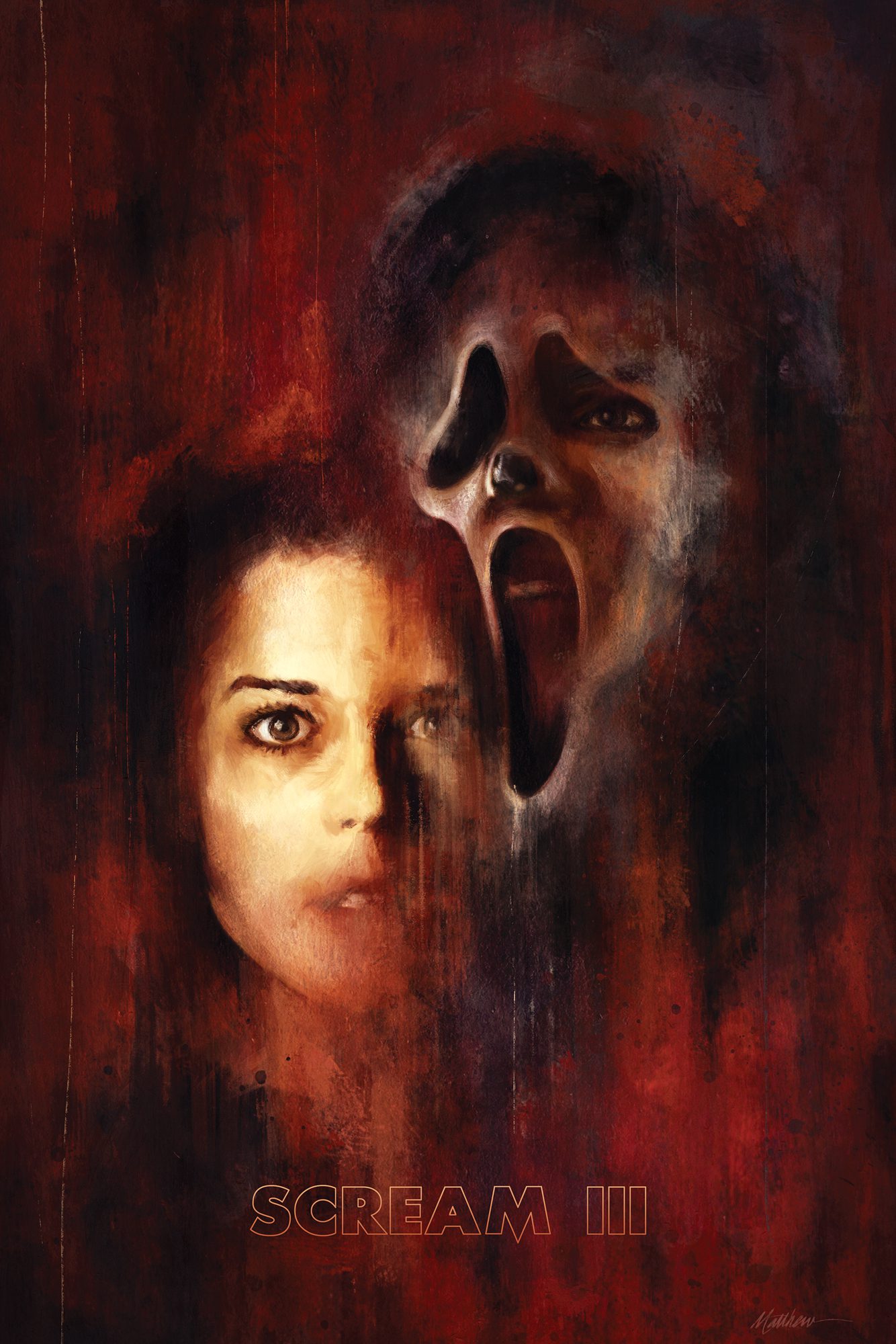
How did you come to your distinct style?
That was a slow evolution. I worked hard early on to develop a style closer to the Drew Struzan technique … where I could capture realistic likenesses and render key art that felt very connected to that line of traditional poster illustration from the 70s and 80s. But, every now and then, I would feel so constrained by the need to make the art so clean and realistic, that I would spend time just creating these dark, abstract horror pieces (akin to the works of Francisco Goya or Francis Bacon). Eventually I just had the idea to take that kind of dark, expressionist style and apply it to my regular client work. It didn’t happen overnight … but ultimately the response to what I was doing was so positive, it just helped to steer my work more permanently in that direction.
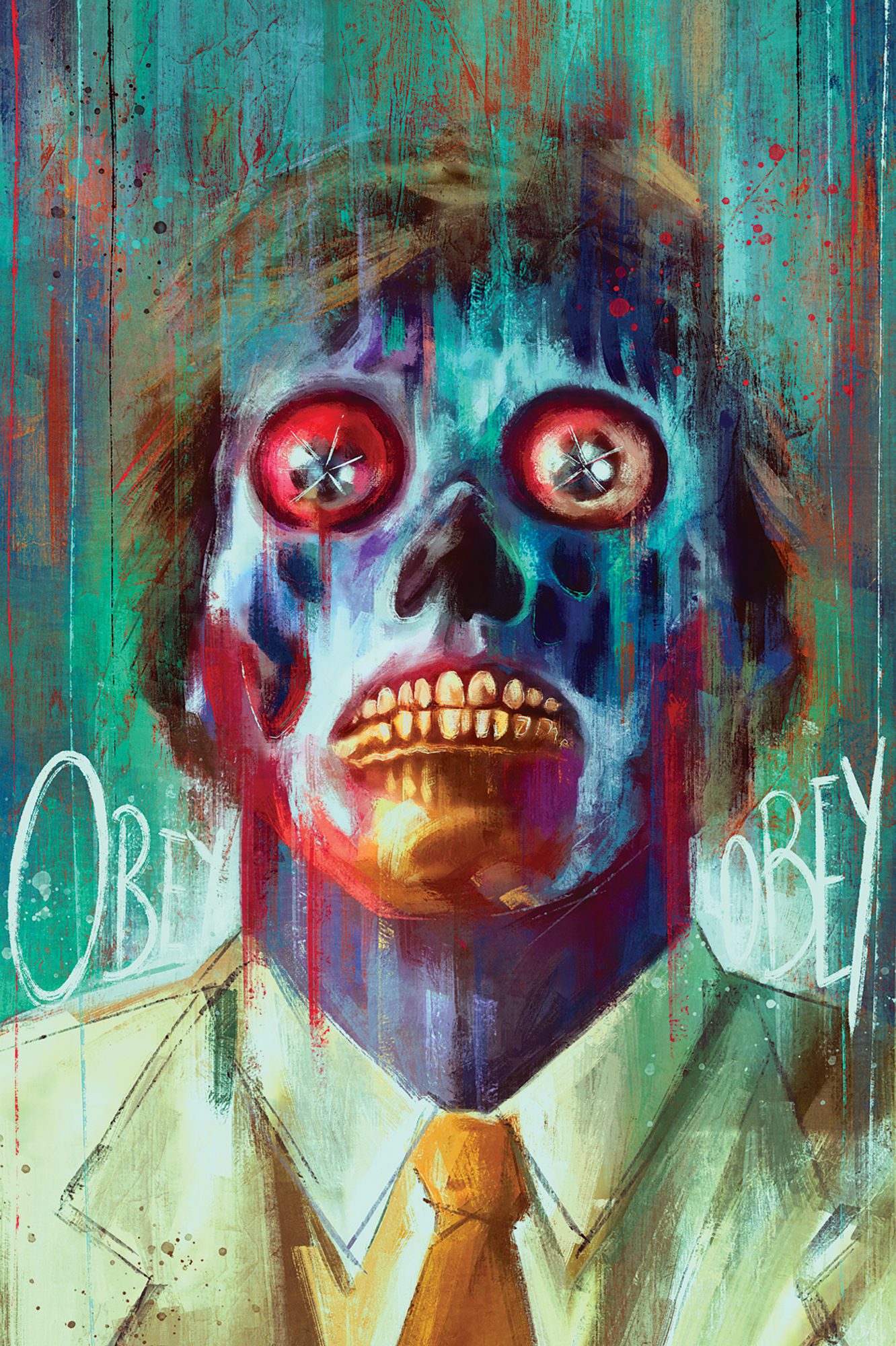
Biggest challenges you face as a traditional artist in this day and age?
Revisions. The ability to make changes quickly, whether it be adjusting the size of portraits, their position in the composition, colors, etc. Making fast changes and hitting deadlines is such a massive requirement in this field, and that’s the reason I started working digitally in the first place. I admire any artist who has held out and works entirely traditionally; I’ve found that I use a combination of traditional and digital techniques in my work these days, just in order to make the workflow with clients and studios as seamless as possible.
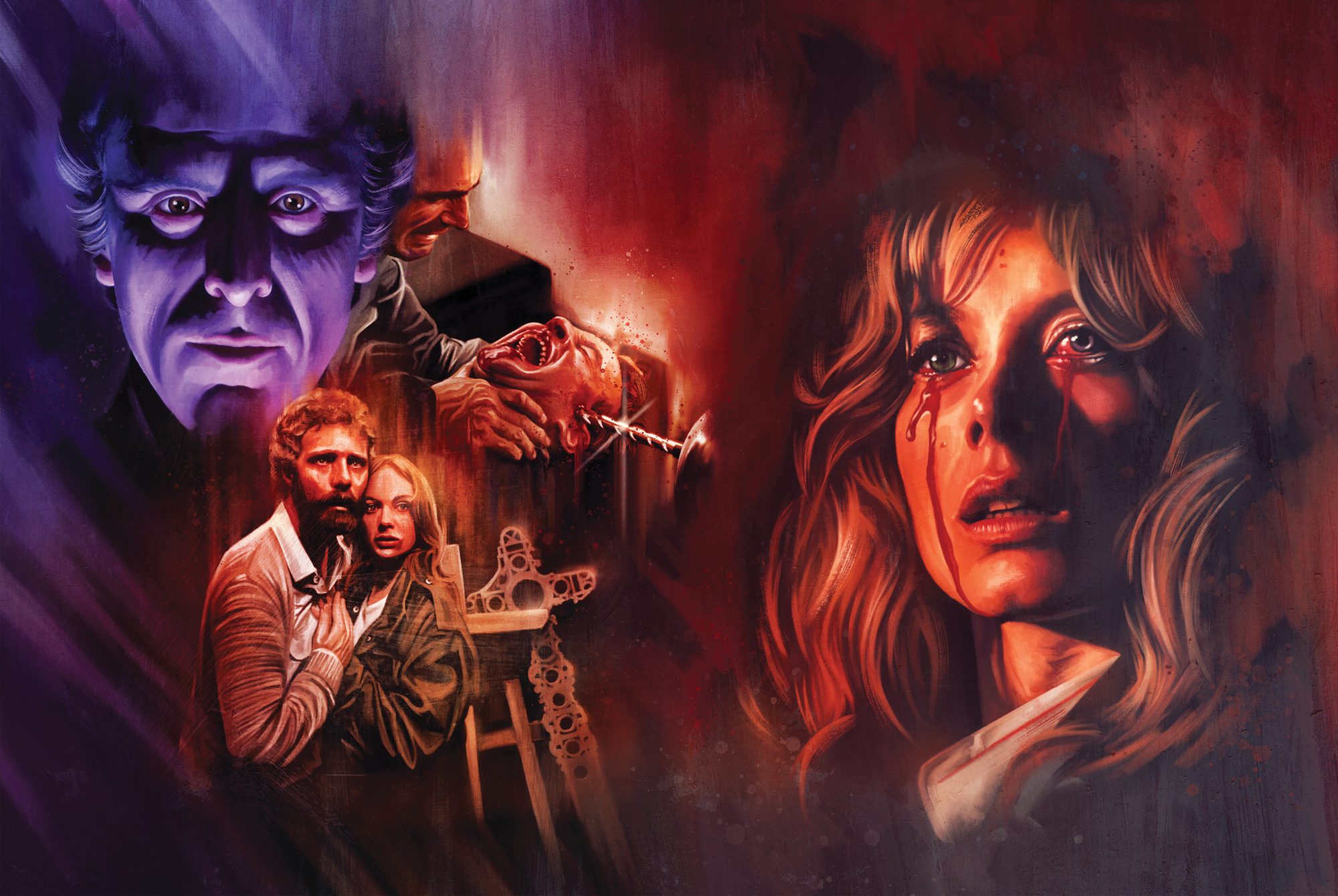
You appreciate artists who take an organic and unconventional approach — creator of Hellraiser’s Pinhead Clive Barker using steak knives to create texture in his paintings, comic artist Bill Sienkiewicz using house paint, etc. Can you expand on this value and also what “untraditional” art techniques you personally use (or want to try).
That’s a great question. I think sometimes, especially when we’re first starting out in the arts, we can get fooled into thinking that there’s a singular — or right — way to accomplish something. If you go to an art store there’s no shortage of expensive paints and tools … and I think it’s easy for us to believe that we need those things in order to create good art. What I admire about Barker and Sienkiewicz is that, time and again, they show that you can make breathtaking art by simply using whatever tools are at your disposal. Even comic artists like Jim Lee use cheap pencils and Sharpie markers to create absolute jaw-dropping masterpieces.
Most of my work these days is for clients, and unfortunately it doesn’t give me an opportunity to do much experimentation. But it’s definitely something I’m looking forward to indulging in the future when I’m able to create work just for myself, independent of approvals of deadlines.
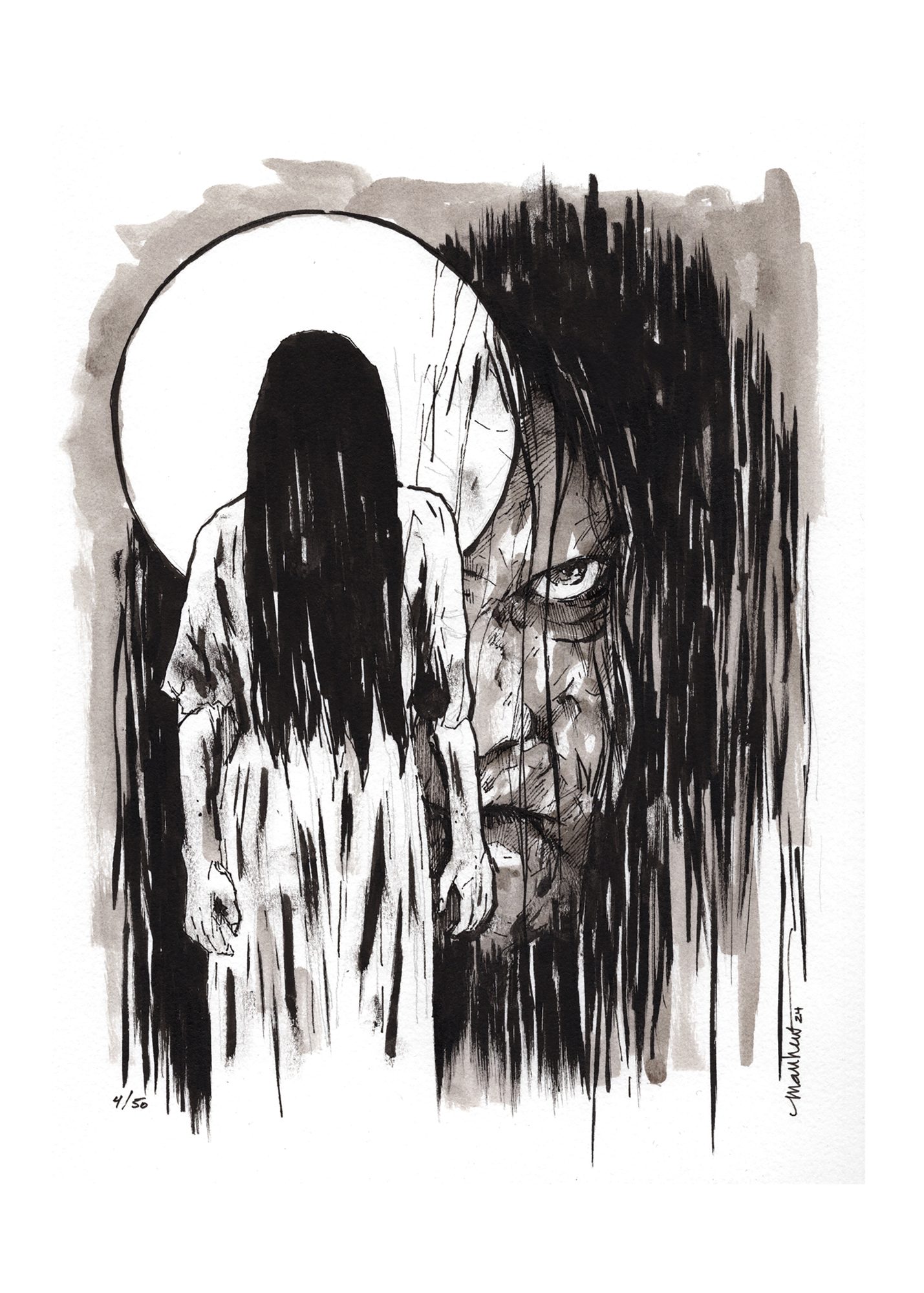
Working for yourself takes an incredible amount of discipline and self-motivation. How do you keep your creative fire stoked and momentum going?
Some days are easier than others. The deadline is what ultimately always forces me to keep going, and since this is my livelihood, knowing that I need to pay bills with artwork is another big motivator. I do what I can to stay organized, but there are definitely some days where, a few hours into a piece, I’m still struggling to figure it out. I think it’s important for any freelance creative to be aware of burnout and do regular check-ins on their own stress levels. It can be easy to work late hours and through the weekends when you’re your own boss. But forcing yourself to have a work-life balance (that works for you personally) is the key to surviving many years in this industry.

Most memorable highlight of your career to date.
I’ve been really fortunate to have a lot of fun highlights along the way. But, one that definitely stands out for me was having dinner and drinks with Macaulay Culkin and his wife, Brenda Song, at their beautiful home in Los Angeles. They’re such a genuinely nice couple … it was a pleasure to hang out and just talk with them.
Biggest obstacle / creative block / u-turn you’ve overcome.
That’s such a tough question. I feel like almost every project I’ve had some kind of challenge that had to be overcome. In general, however, the biggest challenges are always when you become too attached to a design or layout … and then a client asks for a big revision. It can become almost impossible to see how to implement a big change if you’ve fallen in love with your original concept.
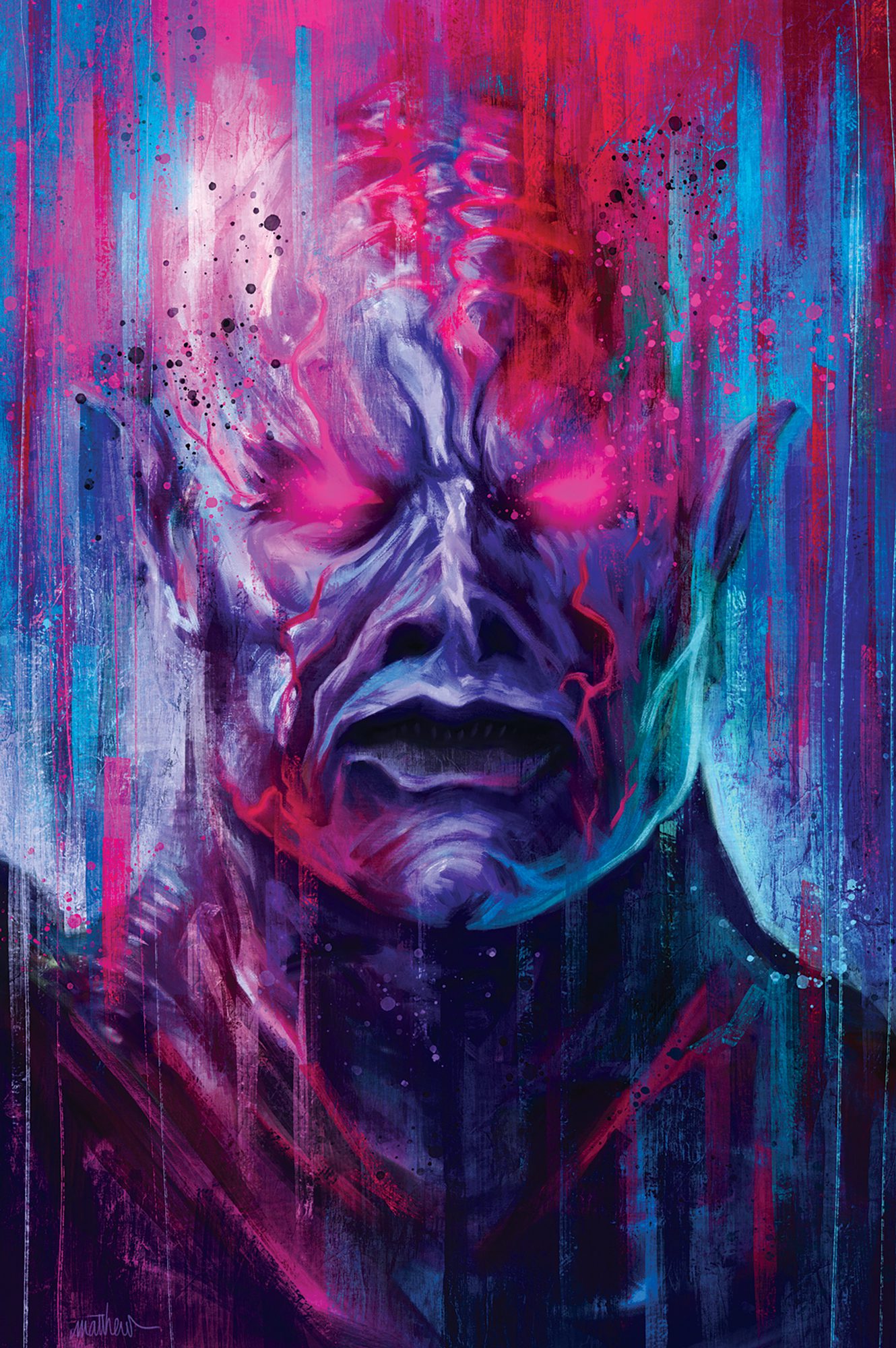
Favorite / least favorite part of being an artist?
The freedom that comes with being an artist. Being able to set my own hours has given me the rare privilege of spending so much quality time with my family and my kids — and that’s honestly the most important thing in the world to me. And, of course, it’s just fun to wake up every day and make a living painting art for comics and movies.
My least favorite aspect is definitely the business side of things. It’s a whole other kind of stress dealing with quoting projects, securing payments, dealing with taxes, etc. There’s a lot to learn if you want to do this kind of work full-time and run a successful studio.
Weirdest rule or guideline you’ve been given when drawing a character.
That’s a really good question. Because I work on a lot of posters where celebrities need to give their final approvals on the art, there’s usually a fair amount of rules and guidelines in place throughout the whole process. But I will say, when I created some artwork for Upper Deck/Marvel, they included a 14-page document outlining what characters could be drawn and how they needed to look. Including some very specific requirements for Howard the Duck. I never would have guessed there were so many rules surrounding that character.
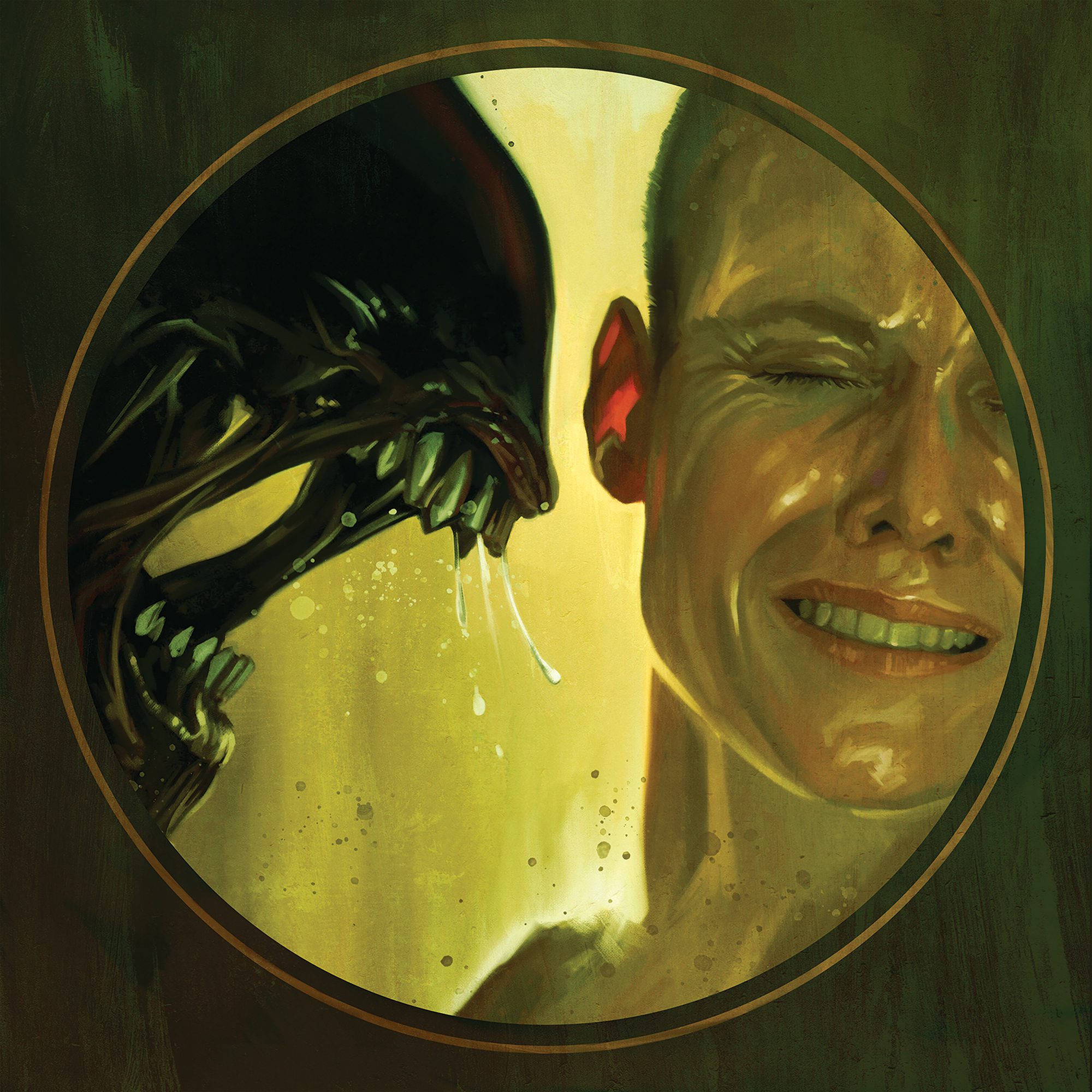
What’s a piece of advice you can give to aspiring artists that you wish you had known?
Be patient. There’s nothing worse than feeling frustrated early on that you’re not as far ahead in your career as you had hoped. There’s no timeline for something like this. It can take months or years before you start getting the jobs you want. But keep at it — keep putting your artwork out there, and be willing to hear the advice that more established artists offer you along the way. Any career in the arts is hard. It’s emotionally hard, as well as financially. But if you give up, you’ll never know how far you could have made it. So just keep going.
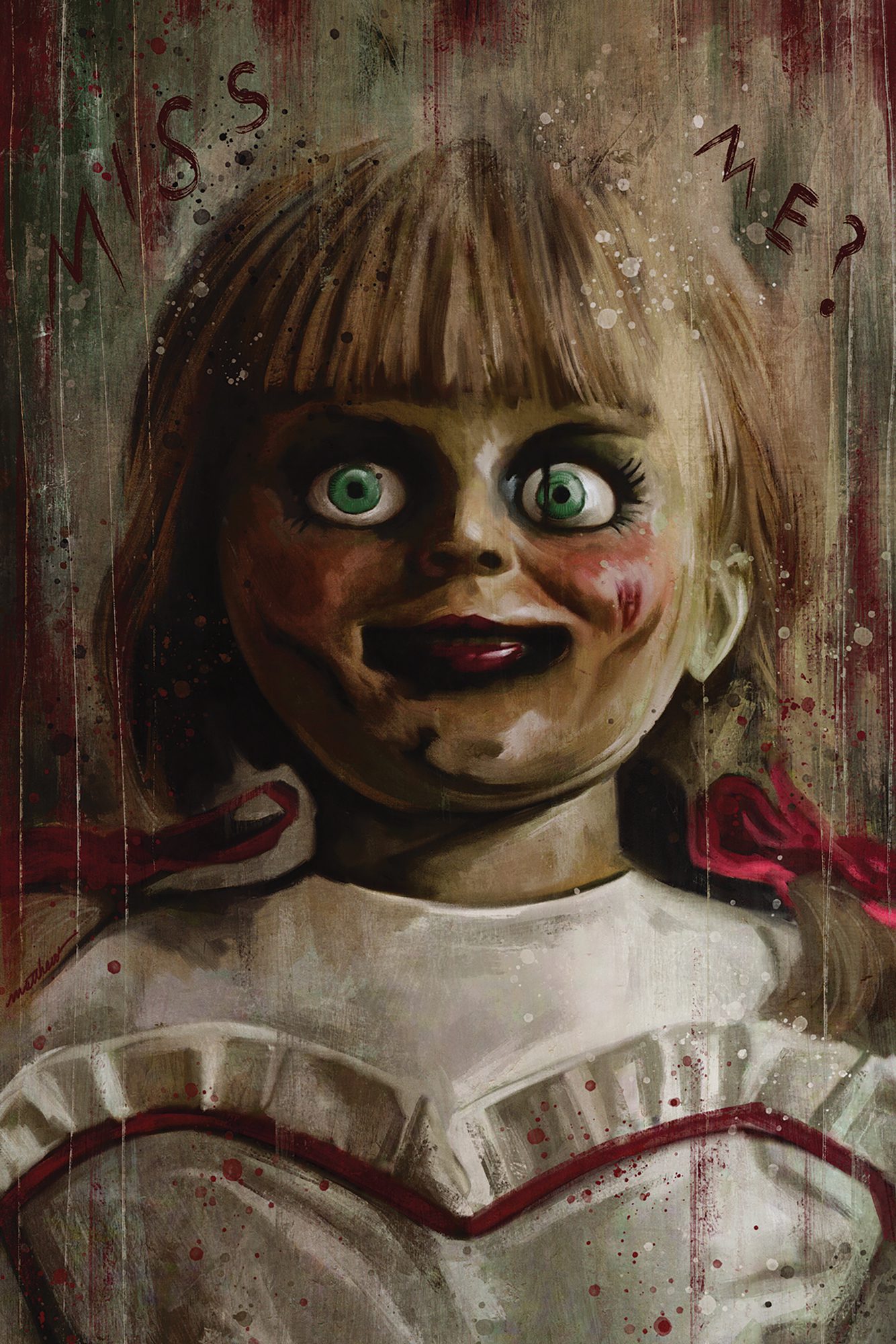
Your definition of art.
I think art is — or should be — a nonviolent form of self expression (that is to say, something that doesn’t physically harm others). It’s that fundamental act of creation that we feel naturally compelled to do as humans. I think art is a broad term that encompasses a lot of disciplines and mediums. But, I like to think that art is a very necessary aspect of our humanity — and through the experience of art, we come to a better and richer understanding of ourselves.
What projects are you currently excited about?
I’m not sure to what degree I can ever talk about client work … but I have some superhero-related paintings in the works that I’m looking forward to revealing next year. And in the film world, I’ve just started writing the screenplays for a horror trilogy that I’m really excited to delve into.
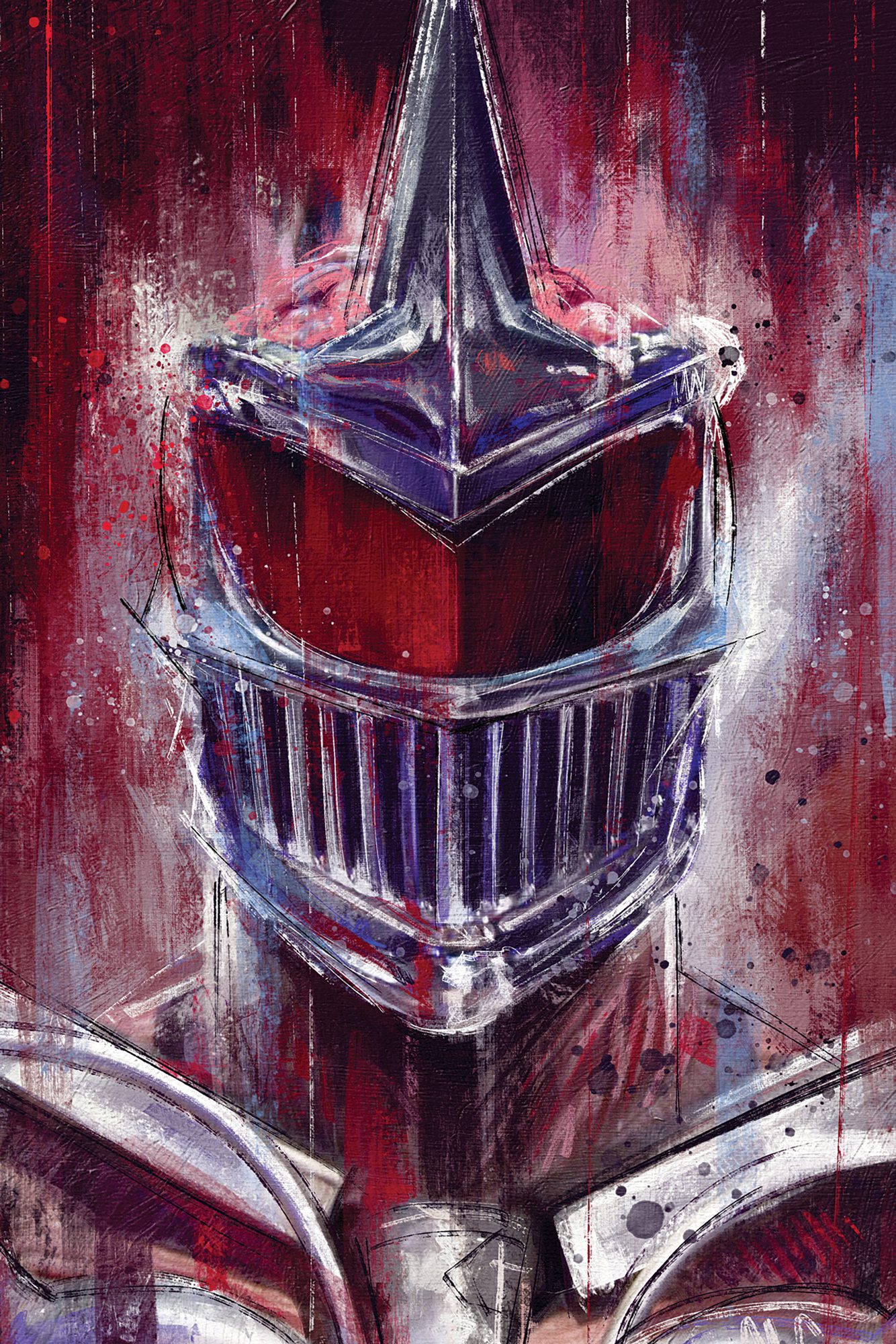
What’s your goal for the rest of the year?
I’ve booked most of the year already with projects, so for me it’s just a matter of trying to stay on schedule and slowly get everything finished up on time. My goal is to get everything wrapped by early December to hopefully take a few weeks off around Christmas. It’s always great to start the new year feeling refreshed and ready to go.
Anything else on the horizon?
I’m very slowly starting to layout the first issue of a comic that I created … which is fun because I haven’t tackled sequential (interior) art for many years. I have to try and fit in the work between my actual client projects which can be difficult. But I’m hoping to have something finished by early next year that I’m able to start sharing.
Top three artists.
Alex Ross, Bill Sienkiewicz, Drew Struzan.
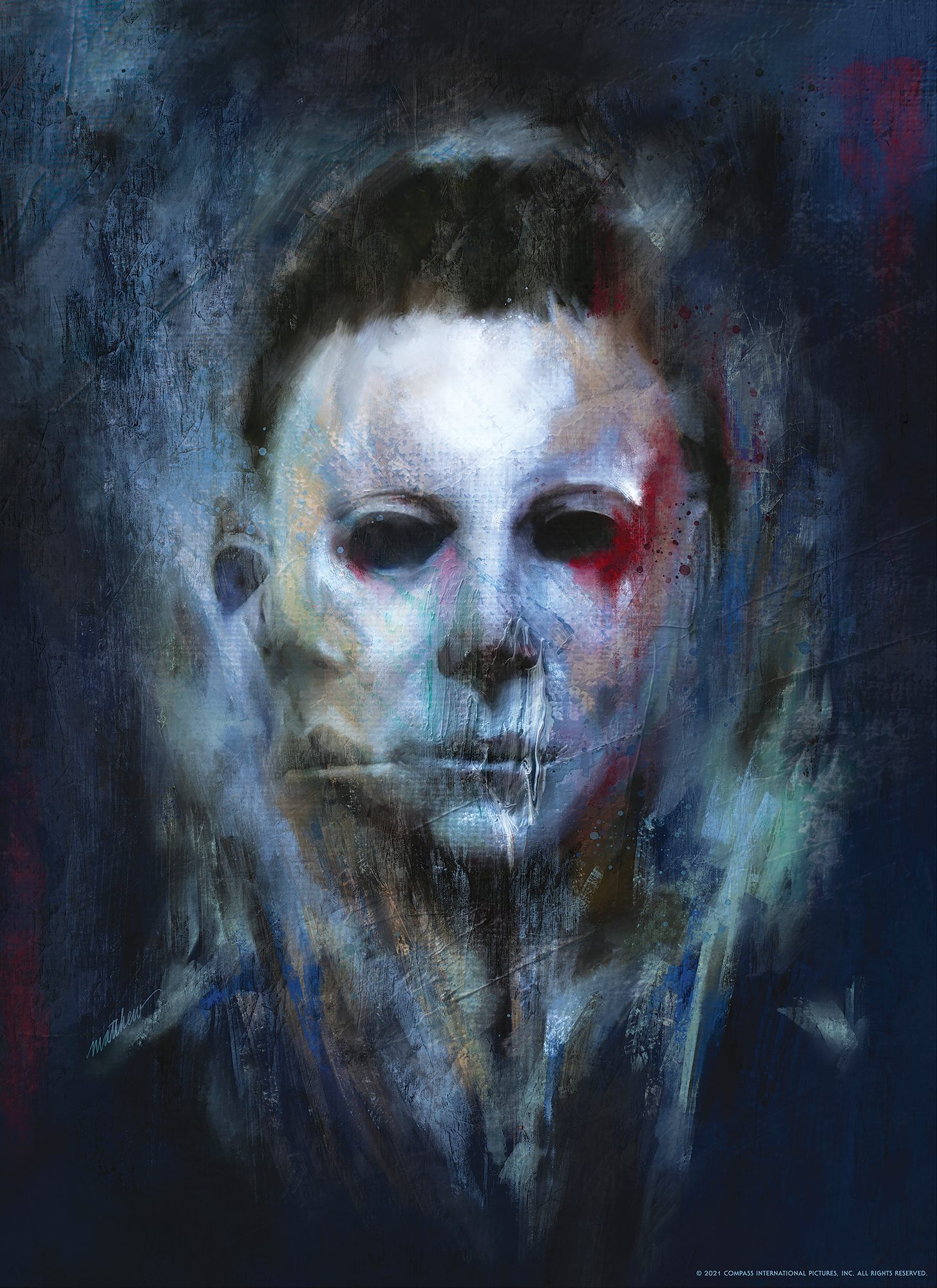
Top three films.
To make it easier, let me give you what I consider to be three of the best horror films of all-time. Halloween (1978), The Exorcist (1973), Poltergeist (1982).
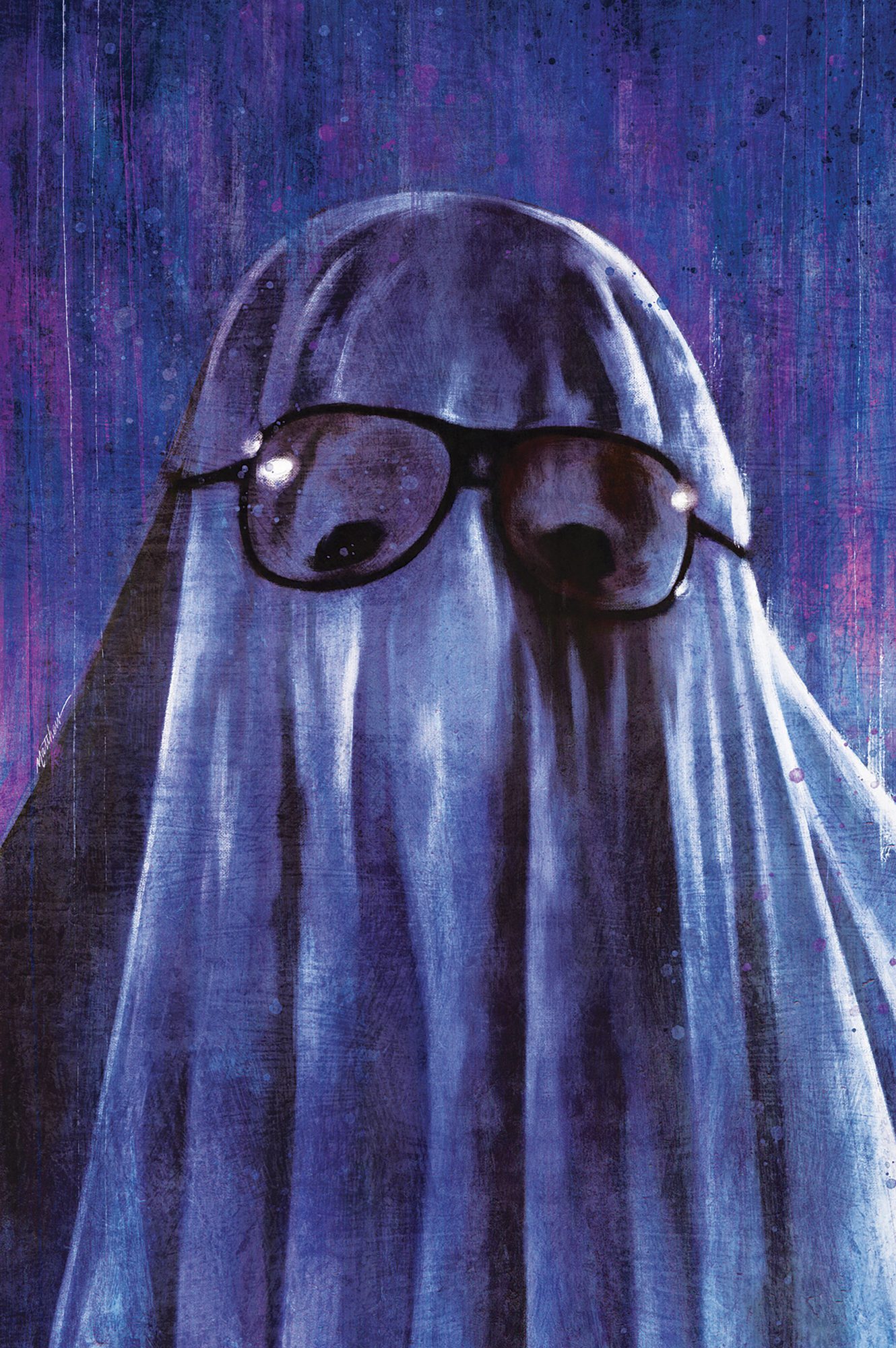
Top three comics.
Kingdom Come (Alex Ross/Mark Waid), Marvels (Alex Ross/Kurt Busiek), Watchmen (Alan Moore/Dave Gibbons).
Top three albums.
Pet Sounds (Beach Boys), Wincing the Night Away (The Shins), Absolution (Muse).
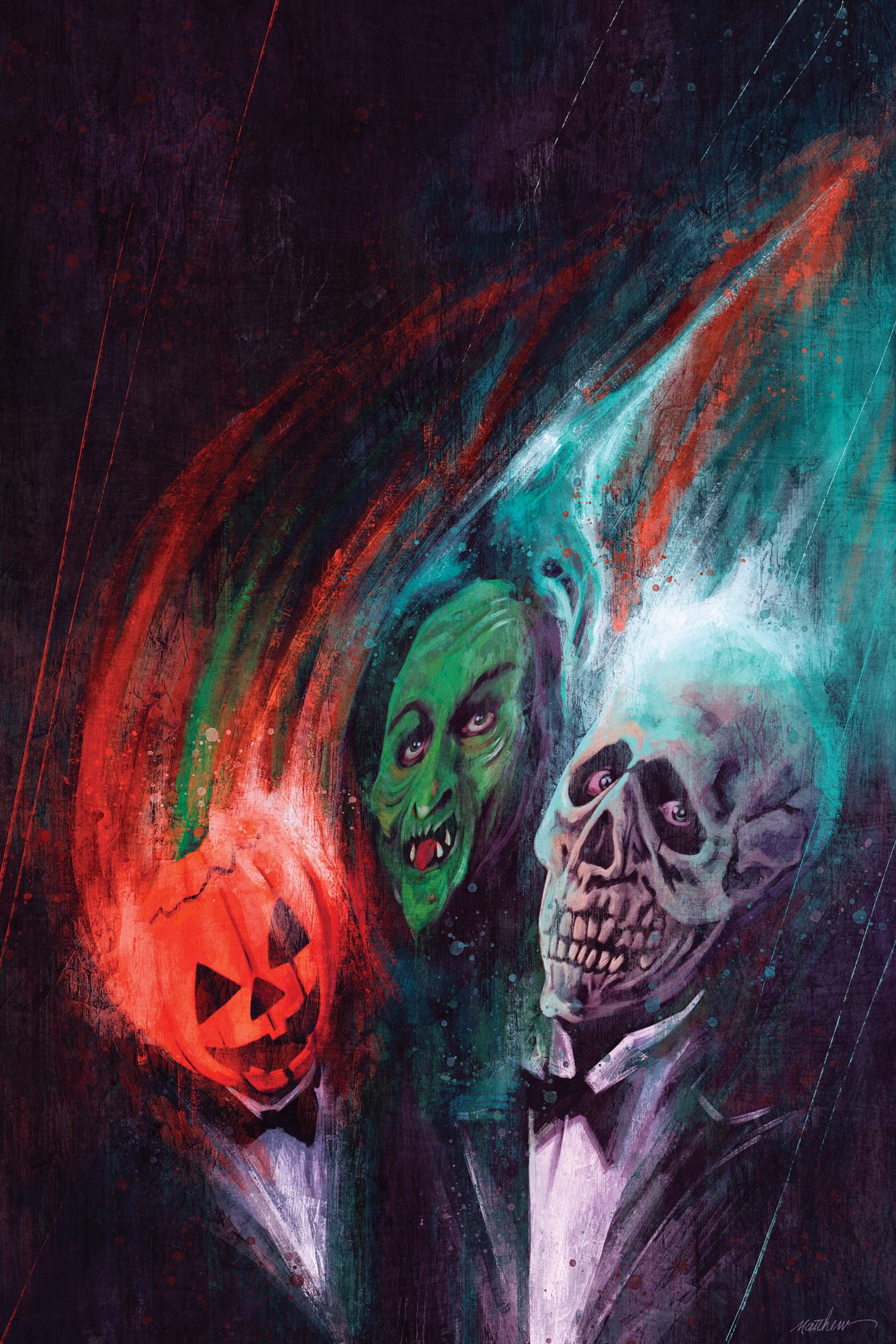
Top three characters.
Calvin (and Hobbes), Frasier Crane, Freddy Krueger (how’s that for a wild top three list!).
Top three movie posters.
Rosemary’s Baby (Wieslaw Walkuski), Nightmare on Elm Street (Matthew Peak), European Vacation (Boris Vellejo).
Favorite art medium.
Gouache.
Favorite thing to draw/paint/create.
Monsters!
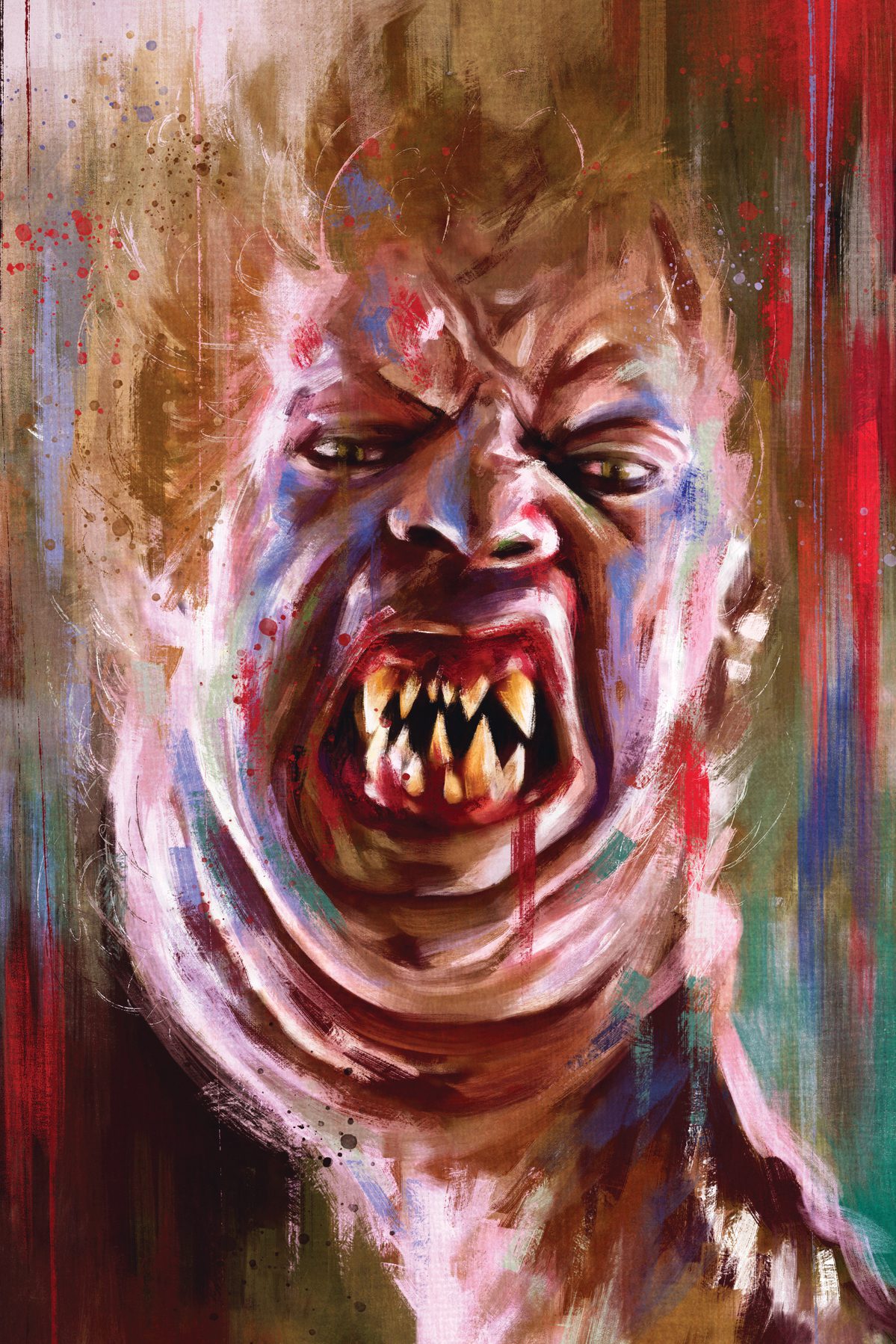
If you could be transported to any fictional world, where would you go?
It feels like a silly answer, but probably into either the MARVEL or DC universes. I think it would be amazing to live in a world where that kind of magic and those superhuman abilities are possible.
You have a day to spend with one character. Who is it, why and what do you do?
Spiderman. Genuinely I’d just love to know what it feels like to go web-slinging across New York City!
Anything I miss?
I think you covered it all! Thank you so much for the chance to talk about so many diverse topics and also shed a bit more light on my process and career. I appreciate it!
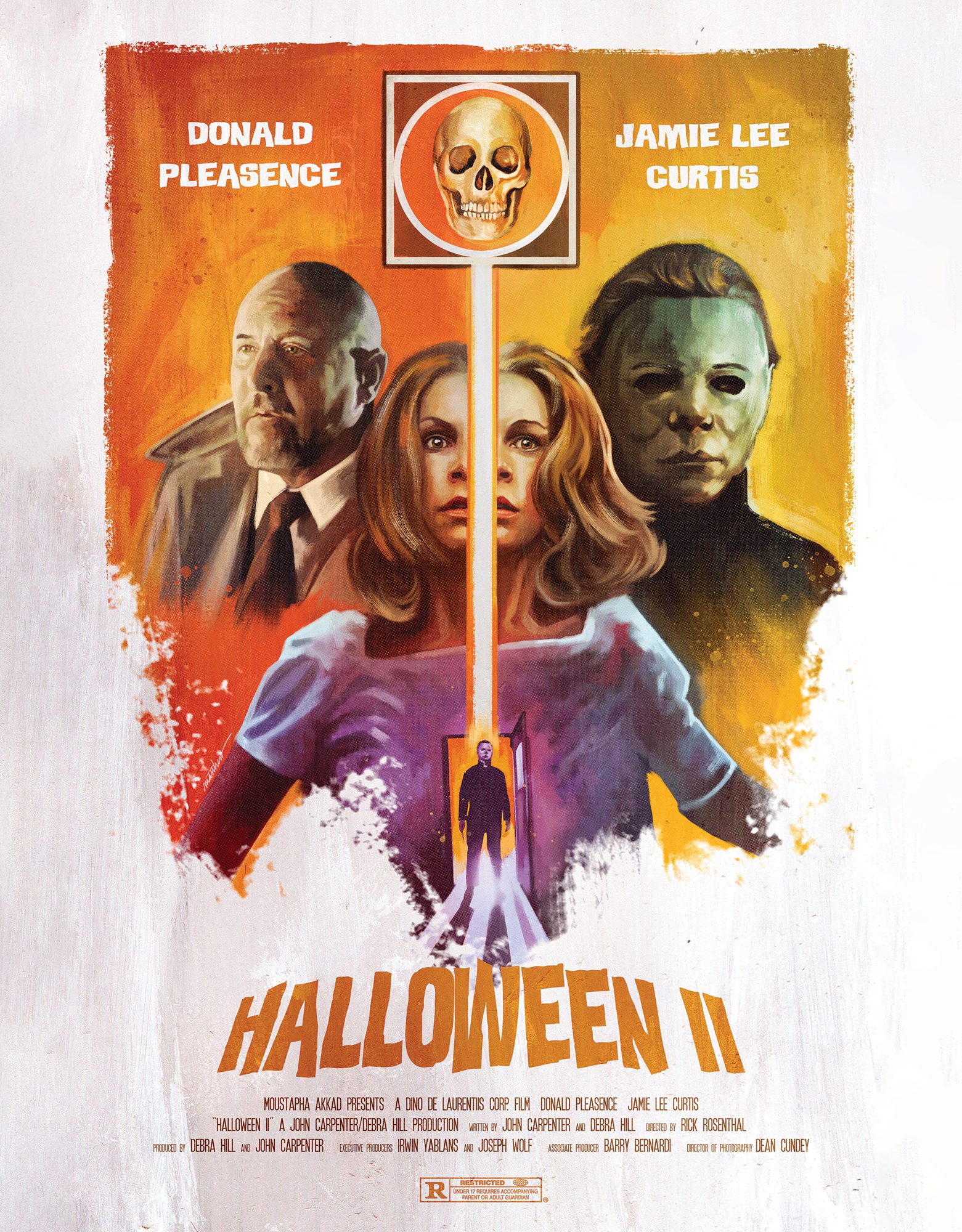
Follow Matthew for more talented work: Instagram | Facebook | X | Website
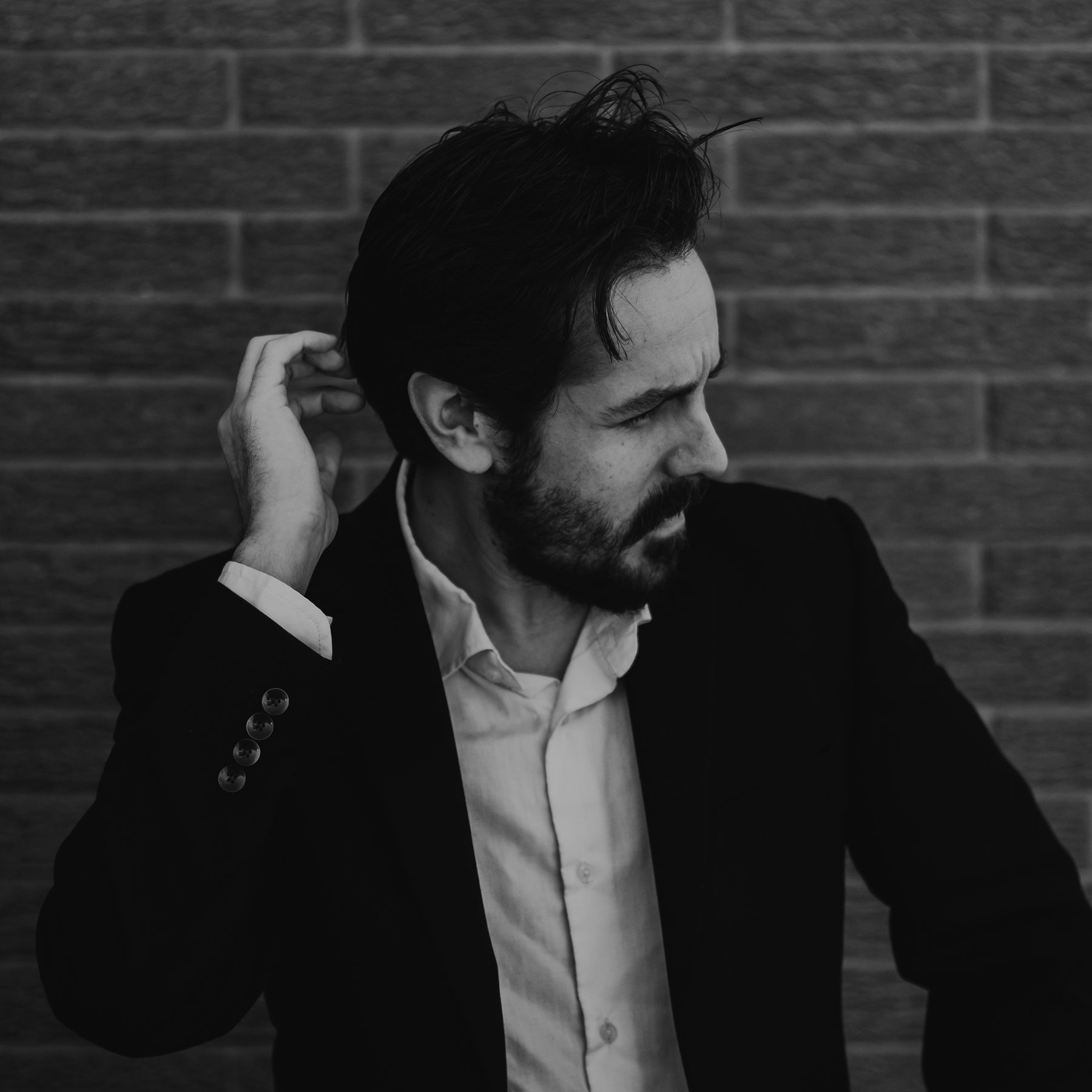
Krysti Joméi is the co-owner and co-founder of Birdy Magazine. Creating in Colorado for the past decade plus, she’s lived all around San Francisco, by Houston’s NASA, on an island across from Seattle, near the WA/Canadian border, and under the Nandi Hills in Kenya. She loves outer space, the ocean, running in nature, anything written by Trent Reznor, and adventuring with her partner, Jonny, husky and black cat.
Check out Matthew’s cover art for TRUE BELIEVERS 2 in case you missed that interview with creators Stephen Graham Jones and Joshua Viola. Keep your eyes peeled for more future work in Birdy by this talented artist.
